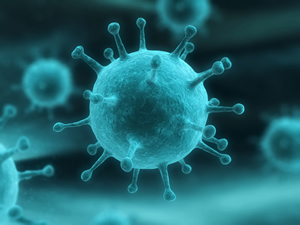
This article is adapted from a NIOSH nanotechnology bulletin.
Overview
Nanotechnology is the manipulation of matter on a near-atomic scale to produce new structures, materials and devices. This technology promises scientific advancement for many sectors such as medicine, consumer products, energy, materials and manufacturing. Nanotechnology is somewhat loosely defined, although in general terms it covers engineered structures, devices, and systems that have a length scale between 1 and 100 nanometers. At this size, materials begin to exhibit unique properties that affect physical, chemical, and biological behavior. Researching, developing, and utilizing these properties is at the heart of new technology.
As with any new technology, the earliest and most extensive exposure to hazards is most likely to occur in the workplace. Workers within nanotechnology-related industries have the potential to be exposed to uniquely engineered materials with novel sizes, shapes, and physical and chemical properties. Occupational health risks associated with manufacturing and using nanomaterials are not yet clearly understood. Minimal information is currently available on dominant exposure routes, potential exposure levels, and material toxicity of nanomaterials.
Studies have indicated that low solubility nanoparticles are more toxic than larger particles on a mass for mass basis. There are strong indications that particle surface area and surface chemistry are responsible for observed responses in cell cultures and animals. There are also indications that nanoparticles can penetrate through the skin or move from the respiratory system to other organs. Research is continuing to understand how these unique properties may lead to specific health effects.
Nanotechnology at NIOSH
NIOSH is the leading federal agency conducting research and providing guidance on the occupational safety and health implications and applications of nanotechnology. This research focuses NIOSH’s scientific expertise, and its efforts, on answering the following central questions:
- How might workers be exposed to nanoparticles in the manufacturing or industrial use of nanomaterials?
- How do nanoparticles interact with the body’s systems?
- What effects might nanoparticles have on the body’s systems?
Research to answer these questions is critical for maintaining U.S. competitiveness in the growing and dynamic nanotechnology market.
NIOSH contributes to nanotechnology research in the following ways:
- NIOSH is at the forefront of U.S. research to understand the occupational health implications of nanomaterials.
- NIOSH offers interim guidelines for working with nanomaterials, consistent with the best scientific knowledge.
- NIOSH publishes new findings and recommendations as its research advances.
NIOSH has identified 10 critical topic areas to address knowledge gaps, develop strategies, and provide recommendations. Each topic provides a brief description of the research that NIOSH is conducting in that particular area of nanotechnology.
NIOSH has also created a field research team to assess workplace processes, materials, and control technologies associated with nanotechnology. Research laboratories, producers and manufacturers working with engineered nanomaterials have the opportunity to participate in a cost-free, on-site assessment.
Much research is still needed to understand the impact of nanotechnology on health, and to determine appropriate exposure monitoring and control strategies. At this time, the limited evidence available suggests caution when potential exposures to nanoparticles may occur.
Simply Safety! incident management software can help protect you and your company by allowing you to be proactive in reducing risk and associated costs and keeping an accurate due diligence trail. Simply Safety! software program replaces paper-based or spreadsheet tracking with a modern efficient way to manage critical compliance data.
Looking for a better way? Call 1 800 862-9939 today to book a 20 minute online web demo of Simply Safety! for your management team!
Visit the Simply Safety! products page.
